Narrative History
Taos serves as a point of converging cultural narratives and timelines; it is a community that exists locally with a history of global influence. The people of Taos Pueblo have existed below the Sangre de Cristo Mountains for millennia, with origins in a sacred lake housed high in the mountain. With strong place-based practices, Taos Pueblo existed as a convergence point in pre-contact Native America.
A node in a field of complexities, the trading hub acts as a collection point in which energy is allowed to flow freely between communities through media, art, tools, food, seed, stories, and interpersonal relationships. With each trade, tradition evolves and strengthens the web of place-inspired practices. This continuum, extending across the continent, carries site-specific practices through product, action, and story. This trial-and-error practice is exemplified in the corn or maize carried up from the south, radically transforming the species and our community into an agrarian society. This scientific system of understanding the world is recorded as narrative and translated across cultures. Mythologies start where this process ends, and they describe the unknowable through storied histories based on extrapolative localized understandings.
In 1492, Columbus sailed the ocean blue and created the basis for a false narrative of a “new world.” Unwilling to recognize the storied history of place and people in this “new world,” he claimed it for Spain.1 The mask of the new world that was applied over the complex histories of an existing continent created the basis for misunderstanding and exploitation through settler colonization. The ignorance of this place, of the people, and of earlier foreign voyages is made evident in physical and incorporeal ways. Many of the physical manifestations of settler colonization are visible in contemporary Native American communities, but numerous nonphysical ramifications remain unseen and therefore unresolved. The false label of “Indian”; the erasure, revision, and creation of narratives; and the lack of representation are continually degrading Indigenous place-based understanding.
New Mexico was claimed as a province of the Viceroyalty of New Spain from 1598 to 1821 and was a Territory of the First Mexican Empire and Republic until 1848. It was a US territory until 1912, when it became the forty-seventh state in the United States of America.2 By this time, the communities of Taos had been introduced to cultures and customs from around the world, which were slowly being conflated into traditional lifeways. Known for its natural features, vibrant art, and spiritual practices, Taos retained its status as a gathering point during this period of increasing territorial occupation, but cultural rifts caused conflicts echoed in the landscape of the nearby Rio Grande Gorge.
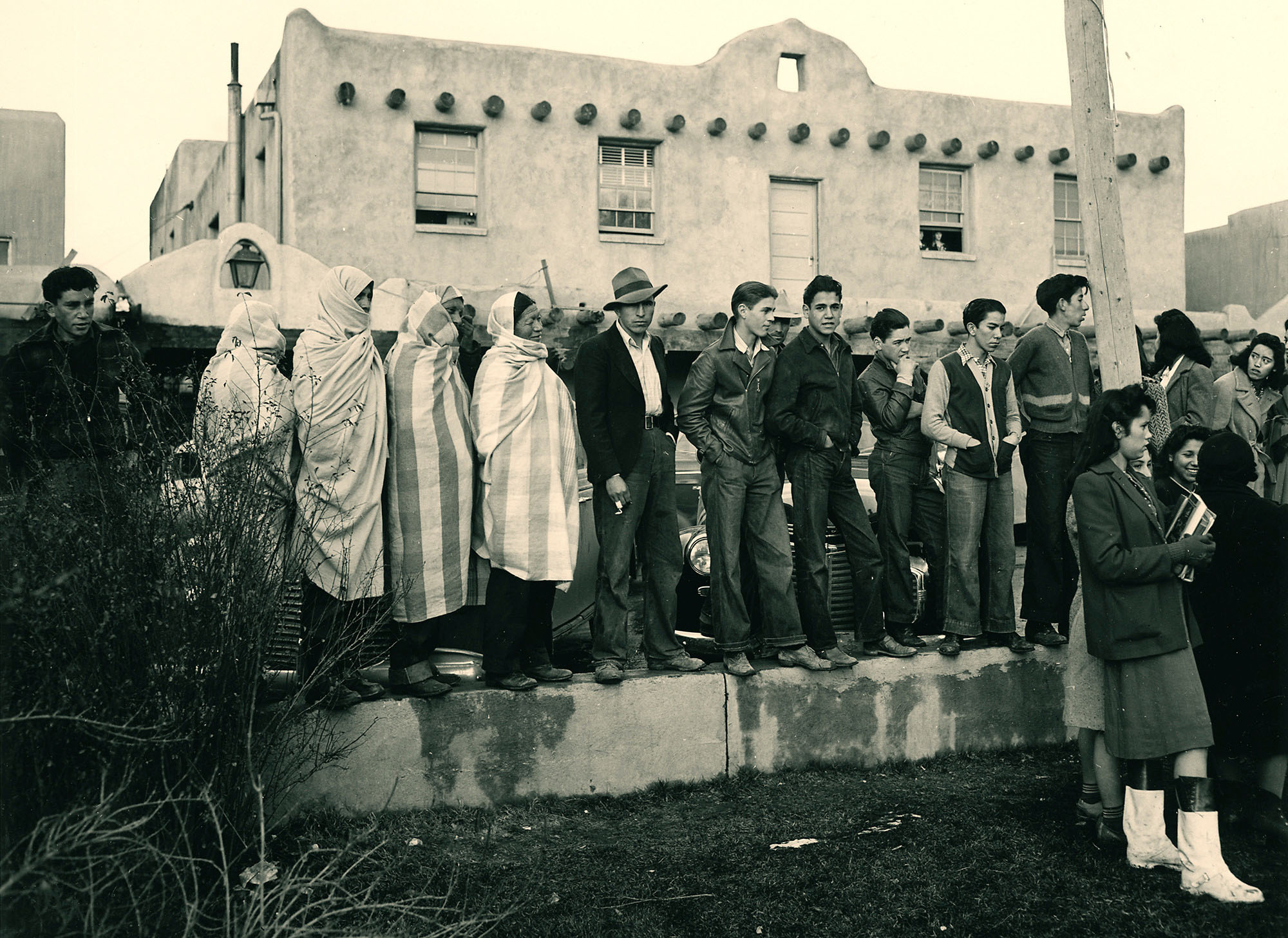
In generational waves, the effects of narrative and place echo physically in my lineage. The choices of my ancestors are made real to me in my surroundings and influence my decisions. For example, my paternal grandpa, a member of Taos Pueblo, fell in love with my Spanish grandmother and received backlash from the community. In the Pueblo’s effort to protect community coalescence and tradition, my grandfather and his lineage lost theirs. Inversely, my mother’s family, aware of the racial hierarchy called the Casta, adopted the classification of Spanish over that of mixed or Indigenous blood.3 To avoid the degradation of the family’s social and cultural class, family narrative was rewritten. In each case, a division was created between the history and the narrative of belonging. When my parents separated, my siblings and I were split between my grandfather’s simple adobe field home on the Taos Pueblo and a series of subdivision homes in town.
The separation between Taos and the Pueblo is demarcated by a small cattle guard, which bounces your car as you pass over it. Each time we transitioned between parents, this subtle bounce, a point of conflict in power and narrative made separation tangible. After years of crossing this boundary and feeling this edge beneath us, we understood the need to exist in simultaneous realities.
My body, my grandfather’s home, and a micaceous clay bowl all contain the story of this place, of my family, and represent tangible embodiments of narrative. Each item represents a reflection on tradition: a relearning of place-inspired practice and a restoration of time.
Body
I was raised in Taos, on the overlapping edges of the Pueblo. My body is informed by Spanish and Anglo narratives acting as physical manifestations of palimpsest conditions in the space. While my history qualified my existence within each group, it excluded me from fully belonging to one. This is exemplified in the movie Selena, in which the father, Abraham Quintanilla, discusses the multinational separation of self with his children. He explains:
Being Mexican American is tough. Anglos jump all over you if you don’t speak English perfectly, Mexicans jump all over you if you don’t speak Spanish perfectly. We gotta be twice as perfect as anybody else… We gotta be more Mexican than the Mexicans, and more American than the Americans; both at the same time! It’s exhausting!4
Separated into the classifications of Native American, Hispanic, and “American” societies, I found myself struggling to perfect each side of myself without letting another fade. Looking back, it is easy to see how much I let go in this pursuit. As I grieve for a past I can never live, I remind myself to experience the future past I exist within. I can interact with time, culture, and narrative through physical communications with place. My body is a physical manifestation of layered spatial conditions: of culture, tradition, property, blood, attraction, and conflict. A frame of reference, my body collects and reflects narratives inherited through relations.
I grew up insecure of my body. I was short, stocky, and relatively dark-skinned; the media highlighted the opposite. I was jealous of my older brother, who grew up closer to the ideal western male form, and I would occasionally adjust my body to attain that image. Slowly, I learned that, through form, I was designed in response to the conditions and histories of this place. My skinny legs were ideal for running, connecting me to the Pueblo tradition of foot travel and the running of the yucca knot during the Pueblo Revolt; my relationship with the sun was celebrated in the melanin of my darkening skin; my irrational fear of cheese became rational when I understood the traditional diet of Pueblo people.5
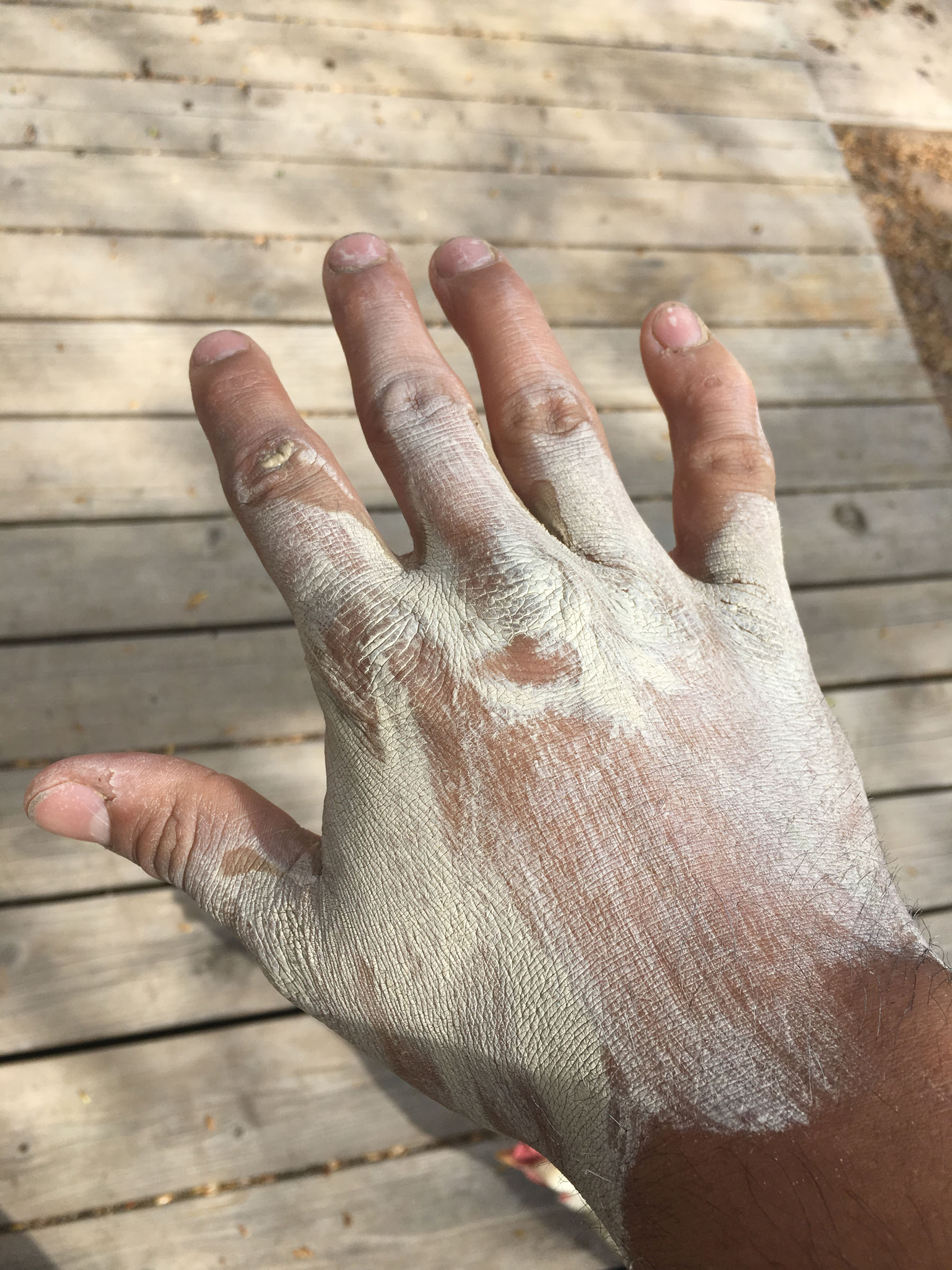
In each bodily condition, cultures are mixing and representing themselves to the world from which they came. My personal decisions created filters through which this history could be perceived. In this way, my physical form became grounds to communicate and curate my history. My family began to resemble their own landscape—an image of place, cultures, and personal choice. These decisions, made locally, reflected outward, created a dynamic field of physical and relational responses.
Building
Related through place-based narrative, earthen buildings and I respond to and reflect our environment. Akin to my brown skin, Taos Pueblo’s earthen walls interface with the environment to transcribe energy flows. Designed with an intimate understanding of the complexities of space, these adobe buildings have continued to serve their community for over a thousand years, narrating the history of our people.
Practiced well before the industrial revolution in New Mexico, and surviving longer than many of its creations, the earthen building methods of Taos symbolize the importance of building/occupant/narrative relationships. Over time, the environment that formed these buildings has adapted, requiring them to evolve or dissolve. Originally, Taos Pueblo had few window openings on its façades. The majority of openings were located on the roofs to defend against raiding tribes. As raids subsided, these preventive measures were no longer necessary, and doorways replaced roof entries.6 The communal buildings of Taos Pueblo have adapted to climate and societal needs while providing space for individual narratives.
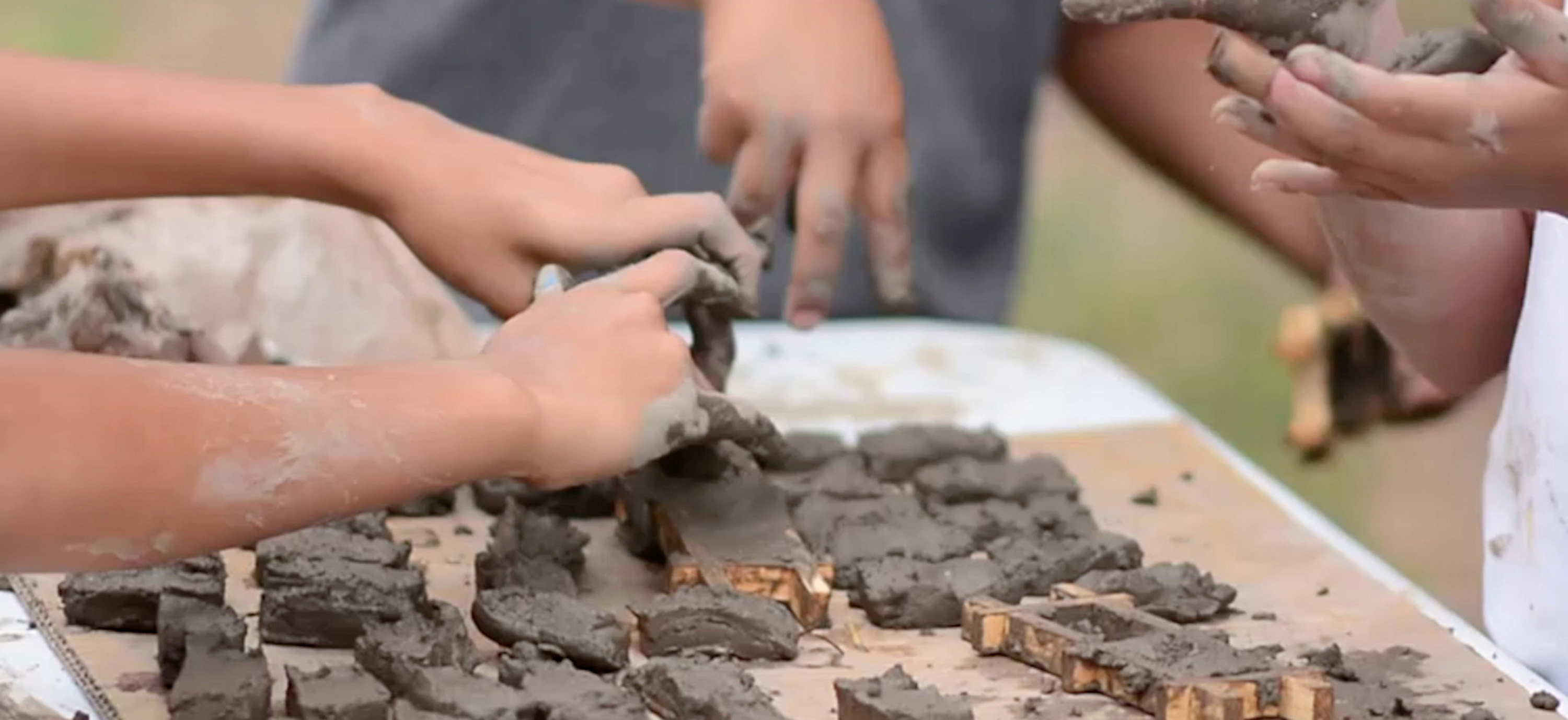
Similar to the human body’s ability to accommodate change, the pueblo’s materiality affords flexibility. Built from its environment, the earthen architecture of Taos Pueblo has an intimate relationship with the flows and forces that envelop it, transcribed through its constant state of unbecoming. As rain erodes the exterior, smoke from burned wood stains the fireplace; human activity inside shakes off loose plaster, and wind carries away and adds new earth to the wall that will seasonally be replastered. This built representation of experience is described in “The Temporality of the Landscape,” in which Tim Ingold discusses the concept of the taskscape. Rejecting the division between humanity and nature, Ingold states that the landscape should be seen with a “dwelling perspective, according to which the landscape is constituted as an enduring record of—and testimony to—the lives and works of past generations who have dwelt within it, and in so doing, have left there something of themselves.”7 Building upon this thought, Ingold poses the question:
Thus organisms may be said to incorporate, in their bodily forms, the life-cycle processes that give rise to them. Could not the same, then, be said of the environment? Is it possible to identify a corresponding cycle, or rather a series of interlocking cycles, which build themselves into the forms of the landscape, and of which the landscape may accordingly be regarded as an embodiment?8
If, according to Ingold, both organism and landscape are an embodiment of the lives, works, and processes of past generations and life cycles, wouldn’t a building be logical? The earthen dwelling symbolizes the separation point between humanity and nature while serving as a reminder of humanity as nature. As it reflects both indoor and outdoor forces, the building embodies the precarious state of all beings and the delicate relationships that wear down and build up. Created from the eroded soils of larger bodies, its changing form challenges the narrative of permanence and weather-resistant materials in the urban built environment. Rather than a means to escape it, earthen architecture reminds us that we are nature and any harm done to the system is done to the self.
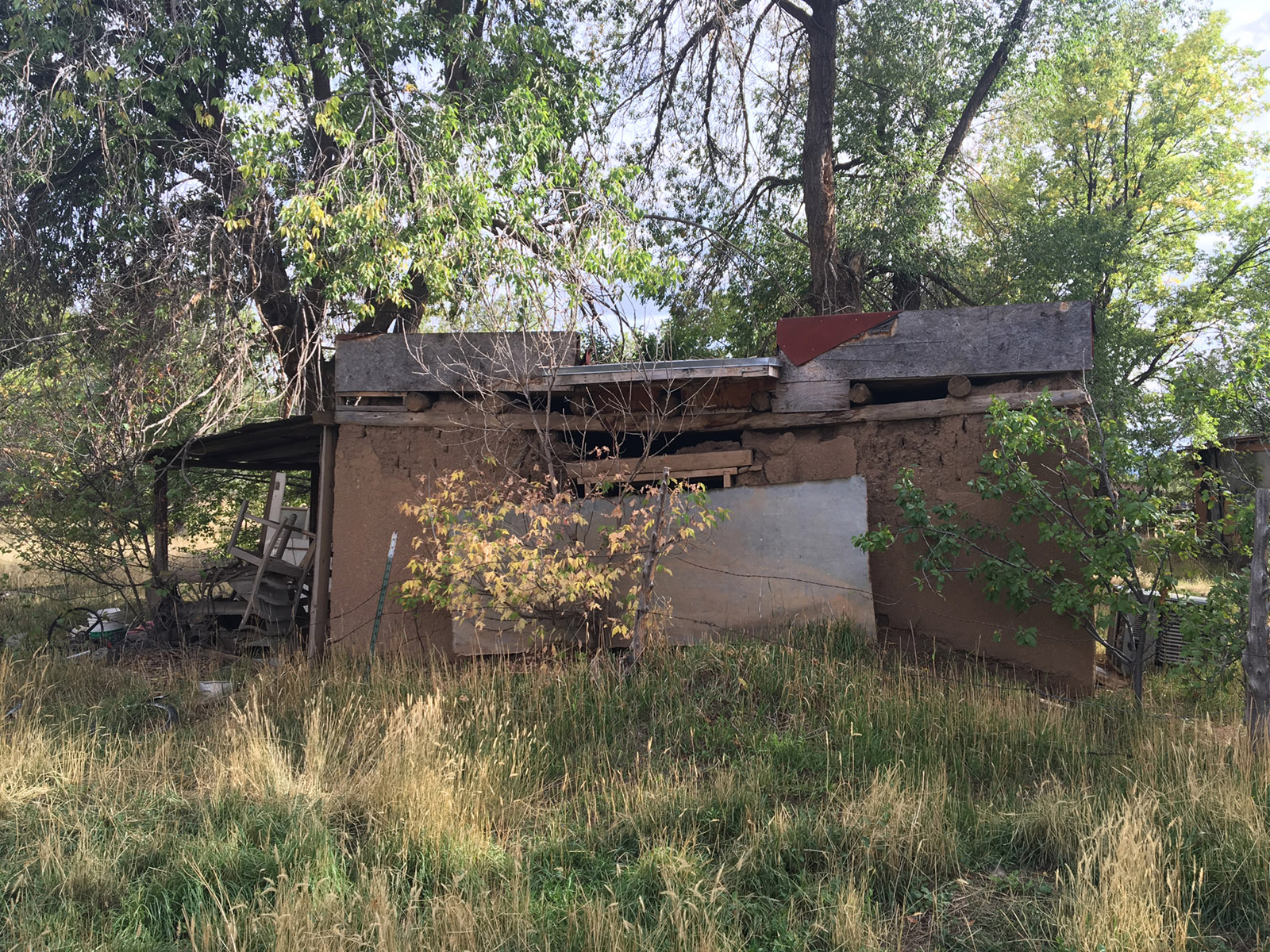
Like my body, the form and function of a building is a reflection of its environment with potential for self-expression. Architectural styles reflect the social and cultural relationships across geographies, while the individual narrative of a building is expressed through its aging. My grandpa Lupe’s house and shed are buildings with an ontology deeply connected to my own. Their current conditions echo the stories of past relations and show signs of collapse and resurrection. Existing in that space for much longer than I can know, the buildings reach back generations into my father’s family connecting us to ancestors long past.
Composed of adobe brick, the two buildings represent a diversity of decisions and resulting effects as seen in the taskscape. My grandpa’s home shows signs of rehabilitation and of disaster; its cementitious gray stucco exterior is covered in adolescent graffiti begging for change. This is the home where I spent my early life, the home of my grandpa, who passed when I was a year old. This home represents his action expressed in the landscape, and my father’s curation of our cross-cultural family history. His efforts connect with his father’s efforts across time in the same space delineated by material usage. This is a place created by familial narrative; its contentious existence is a connection to our indigeneity. That it was eventually burned in an act of arson is a reminder of an estranged relationship with place, and is a base on which to connect back.
The adobe shed across the yard embodies trauma; neglected histories push the walls outward, inviting the outside to cleanse the space. This small adobe structure has a troubled history of suicide, alcohol abuse, and relationships strained by separation. These memories and emotions, overlaid on the building’s surface, reverberate change, rebirth, or the active destruction of an unwanted past. This history, worn from the walls of the building, now sits slumped in piles—returned to the ground at the base of the shed.
In “Venetian Dusts,” Teresa Stoppani describes dust as an object containing the history of the city and its relational forces, stating that “Venetian dust is never ‘dusty.’ It is heavy, largely made of the (often recognizable) debris of the city’s crumbling buildings. Dusting here collects not only traces of inhabitations and aggressive uses but also gathers a material history of the making of the walls and, indeed, of the whole city.”9
Just as Stoppani describes, the agglomeration of soil surrounding the shed actively contains the narrative history of its source. Growing from decay, each pile becomes separated and unified in the building and the environment around it. As Stoppani puts it, “The liquid nature of the Venetian environment is replicated, endlessly and microscopically, in its walls, bricks, fabrics, and stones. Dust here exposes and transforms, erodes and builds up—materials, images, and identities alike.”10 Utilizing natural forces, the building narrates its own story—its phenomenological relationships to the forces of nature, of wind, water, fire, and human activity or neglect. According to the first law of thermodynamics, “Energy can neither be created nor destroyed. It can only change forms. In any process, the total energy of the universe remains the same.”11 This interconnectedness of being is a Pueblo ethos of relationality; all things at every level of observation are in a constant state of interaction. It can be understood that all things exist with their own ontology containing others while belonging to larger bodies.
Fallen earth from weathering structures is an embodiment of scalable belonging. Its narrative contains the cyclical nature of becoming and unbecoming across time. Jorge Otero-Pailos illuminates this condition through interventions of experimental preservation, in which he captures the physical narrative of a building in dust on latex. The surface pollution removed from the building is transcribed onto the semi-transparent latex sheet and illuminated to make the building’s relations tangible. Through this action, Otero-Pailos translates the interconnected experience and physical relationships between nonhuman beings.12 This relationship is present in every interaction between objects—a transfer of energy, expressed physically and symbolically. It is impossible to exist without altering the narrative of innumerable other entities; any built organization of objects and narratives exists in complex relationality. As seen in the two structures at my grandpa’s property, cementitious plastering covers weaknesses without solving them, while the earthen building expresses both its vulnerability and its potential.
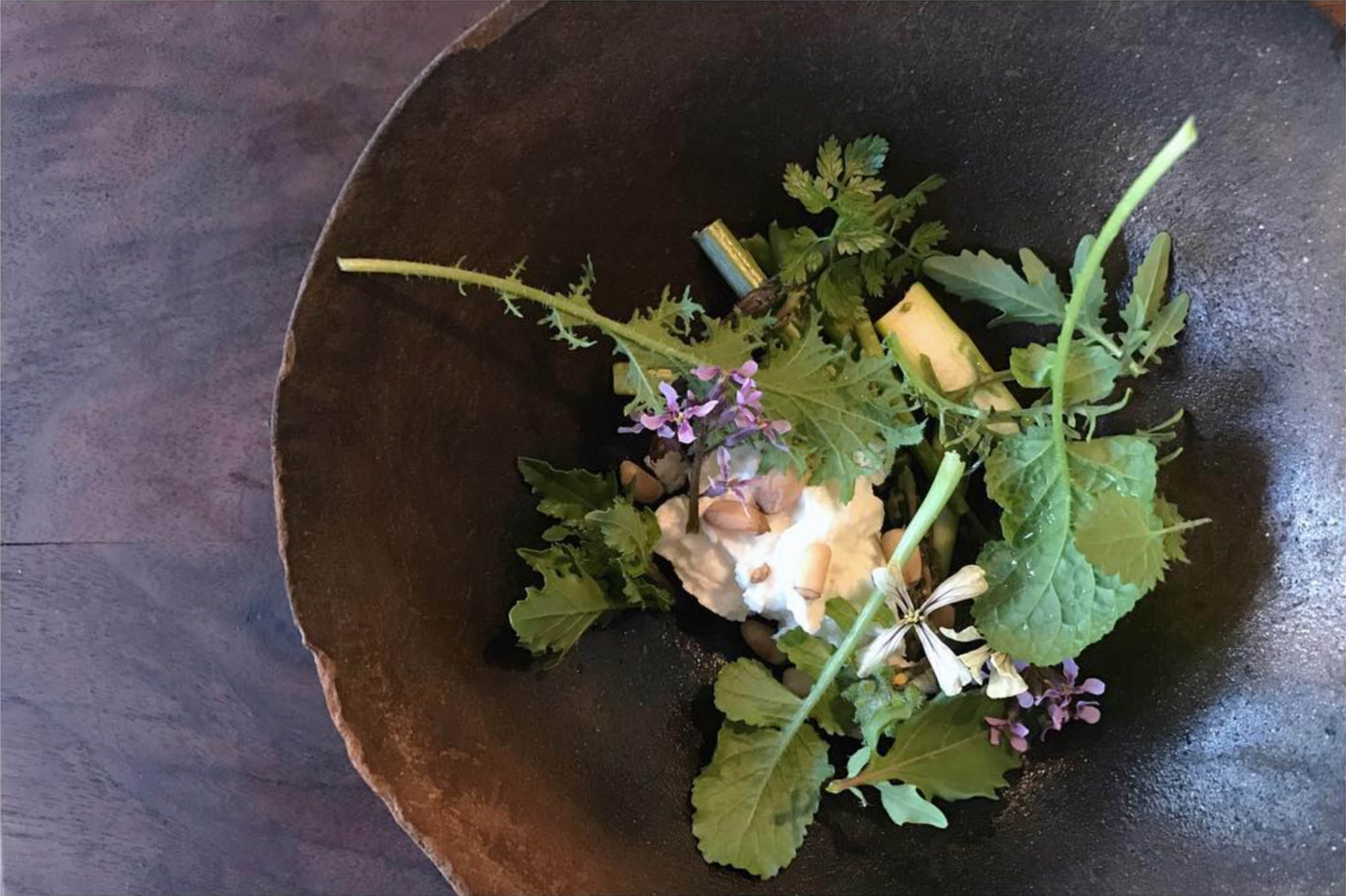
Micaceous Pottery
A symbol of attraction and conflict, of continual degradation and opportunity, clay bodies carry the history of place, time, and relationships. A product of extensive geological movement and representative of its environment—a material for future action—clay embodies time physically.13 Its physicality offers an alternative to linear time. The collaboration of hands with clay allows the artist to manipulate time into a relational narrative between past and future.
Based largely on the geological conditions of a given area, clay is a representation of geological ages long past, shifting continents, and life that humanity may never know. Its abundance allows for over-generalization without respect for intricacies. The ground containing the origins of the universe is the same that sticks underneath your foot on a rainy day. It is, however, impossible to study everything with this level of scientific analysis, and any narrative history would fall short of such comprehensive detailing. Despite this inability to definitively comprehend narratives of a different scale and nature than ours, it is important to recognize the complexities of the unknown. This acknowledgment is implemented in the practice of pottery making.
The micaceous clay bowl serves as an acknowledgment of an incomprehensible past, a product of relational experiences in time, and a physical interface in which past and future are tangible. I am a product of my ancestors’ relations and of separation caused by curated narratives. This history, worn down in response to social, cultural, and interpersonal relationships, rests in a pile of forgotten memories. Like the dirt resting below the walls of my grandpa’s shed, my family narrative exists both as a remnant of the past and as an opportunity for the future. The forces of the environment are in its erosion and can be employed in its resurrection.
In pottery, human activity catalyzes a relationship between water, wind, fire, and pressure. Clay is collected and allowed to age under idealized decay. Each potter has their method of inspiring this decay to promote plasticity, often utilizing materials such as milk, beer, urine, or vinegar.14 This material is then combined and dehydrated into a workable condition in which water, air, and earth are balanced.
In the process of wedging, clay particles—the product of geological relationships—are organized into a state of optimism. This extroverted material is then gathered into a uniform coil, raised in a spiraled pattern. Each layer is pressed against the coils below and above, connecting past, present, and future into a single cohesive form. Exposed to the wind and sun, it releases its moisture, hardened narrative physically contained in time.
Embracing weathering, the form is resolved with sandstone and gradually introduced to heat and fire, realizing its most delicate state of being. In this state of old age, each pot begins the process of unbecoming through the processes that formed it. Each meal experienced in this bowl transcribes its relations through physical changes. A vibrantly colored meal leaves traces, a utensil marks its path, and pooling water deposits its inherited mineral bodies. Its age is shown through its death, the story of being and unbecoming.
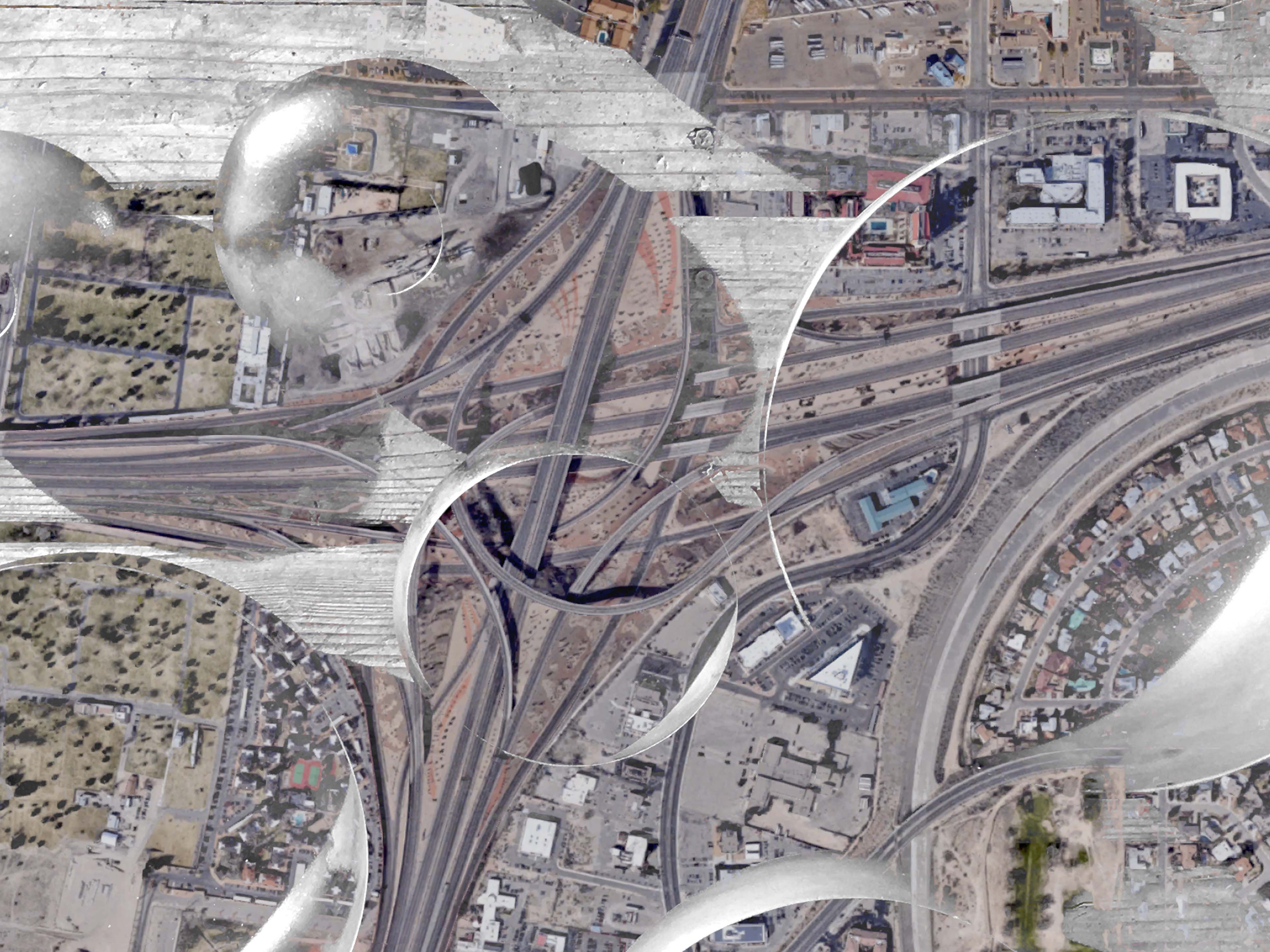
In this path to the meaningful recognition of unknowable narratives of objects, I thought it useful to include lessons learned from the act of making pottery. The principles are simple and seemingly common sense, but symbols of their understanding and implementation are only now returning to the built environment. The principles of Puebloan pottery as they were taught to me and as I have learned them are as follows:
Recognition of Material Narratives: Before the removal of any material, it is customary to say a prayer, make an offering, and recognize the gift that you are about to receive. This is recognition of time, place, action, response, and a reciprocation of the conversation. It is important to take only what you need and, in your way, return as much as you take.
Temporality in Material: Clay is a material that benefits from its relationship with time. Embracing the acts of aging and decay offers an alternate view of material life spans. Materials such as Corten steel and Shou Sugi Ban (the Japanese art of burning cedar) are examples of this temporal embrace.
Emotional Forces of Action: As conversations are an example of interpersonal communication, the act of pottery making is a transferring of emotions and thoughts into physical and temporal space. It is taught that pottery should only be practiced with a clear mindset because negative emotions will ingrain themselves in the form, resulting in cracks or breakages during the firing.
Patience: Similar to the emotional forces active in the making of pottery, patience can express itself physically in form. Any shortage of attention and care during the process will result in unintentional effects ingrained in the being of another.
Permanence: Your actions solidified in clay, once fired, are long-lasting and not easily left repaired. Clay, built into form, has a connection with the narrative history of its maker, user, and environment. Any unintentional effects will have long-lasting ramifications.
Relationship Between Objects: Recognition of the hand in an object is unavoidable and is an important form of respect. This evidence of process, time, and effort demand a respect that is not as easily accessible in machined products. In this way, a piece can be multigenerational, connecting the hand of an ancestor to the life of a descendant.
Maintenance: In understanding the ontology of a pot and its narrative experience, it is important to curate and care for the present histories. Signs of wear are unavoidable and carry symbolic weight, but maintenance allows for an extended and intimate relationship between beings.
-
Valerie Strauss, “Christopher Columbus: 3 Things You Think He Did that He Didn’t,” Washington Post, October 14, 2013, link. ↩
-
“Historical Events and Timeline,” New Mexico Office of the State Historian, link. ↩
-
Adrian Bustamente, “‘The Matter Was Never Resolved’ : The ‘Casta’ System in Colonial New Mexico 1693–1823,” New Mexico Historical Review, April 1, 1991. ↩
-
Selena, directed by Gregory Nava (1997; Burbank, CA; Warner Home Video, 2007), DVD. ↩
-
Gregory Warner, “How One Kenyan Tribe Produces the World’s Best Runners,” National Public Radio, November 1, 2013, link; and Frank Folsom, Indian Uprising on the Rio Grande: The Pueblo Revolt of 1680 (Santa Fe: University of New Mexico Press, 1996), 89. Roxanne Swentzell and Patricia M. Perea, The Pueblo Food Experience Cookbook: Whole Food of Our Ancestors (Santa Fe: University of New Mexico Press, 2016). ↩
-
“Conservation at Taos Pueblo, New Mexico, USA,” Worlds Monument Fund, link. ↩
-
Tim Ingold, “The Temporality of the Landscape,” World Archaeology 25, no. 2 (1993): 152. ↩
-
Ingold, “The Temporality of the Landscape,” 157. ↩
-
Teresa Stoppani, “Venetian Dusts,” Log 17 (2009): 114. ↩
-
Stoppani, “Venetian Dusts,” 110. ↩
-
Jorge Otero-Pailos, “The Ethics of Dust: Westminster Hall,” Jorge Otero-Pailos website, link. ↩
-
Nora K. Foley, “Environmental Characteristics of Clays and Clay Mineral Deposits,” United States Geological Survey, link. ↩
-
“The Particulars of Clay Body Plasticity,” Ceramic Arts Network, link. ↩
Brandon Adriano Ortiz-Concha is a traditional micaceous potter from Taos Pueblo and a recent graduate of the UNM-SAAP MArch program with a professional certification in historic preservation and regionalism.

